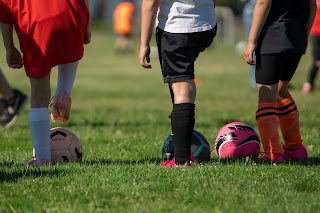My family has participated in soccer for many years now, with three boys playing since the young age of five. My oldest, now 16, is on the high school soccer team roster. We haven’t missed a season. And it’s nearly a year-long sport between fall season, indoor winter league and the spring/summer club. For my oldest, soccer is etched as part of his identity, and how could it not be with so much time devoted to playing soccer? For my two younger boys, both 12, soccer is a part of their lives but less enwrapped in their personal identities.
As a parent and a youth development professional, it has been both fascinating to watch their personal development and challenging to navigate the competitiveness of organized sports and coaching dynamics. As you may already be familiar, youth sports can be a great context for positive youth development (PYD). But, sports can also be detrimental for youth if careful attention is not made by coaches and others responsible in shaping these experiences for youth.
From my experience, the past decade of soccer for my boys has mostly been one that is supportive of PYD. However, my more recent experiences this season have me noticing the sport through a different lens, partly through processing my sons’ experiences, but also through my own observations. The particular teams my boys are part of are falling out of alignment with PYD - something is off, and it has me taking a closer look at what is necessary to ensure PYD in a sports context.
So what are some of the strategies and ideas that need attention?
- First and foremost is the importance of building a community, and the role coaches play in establishing this identity for and with the team. Is it supportive? Is it a place of belonging for all members of the team? Is it motivational? How would the team culture be described?
- Is there focus on skill building? Both in physical development for playing the game (like passing a ball), but also attention towards how the group works together to accomplish a common goal.
- And does the context create support for psychological well-being for all participants? Is the approach developmentally appropriate for the age of participants?
- An additional dimension that may often be overlooked is family engagement. Is the program receptive and inviting for all parents/caregivers to offer feedback about their child’s experience? Or is it only a subset of parents who are involved?
In reflecting on this experience, I’m reminded of something my retired Extension Center for Youth Development colleague shared: We have a lot to learn from sports programs and coaches. Likewise, I believe sport programs can benefit from attention to the principles of PYD.
What do you think are the most important intersections between PYD and sports?
-- Rebecca Meyer, Extension educator
You are welcome to comment on this blog post. We encourage civil discourse, including spirited disagreement. We will delete comments that contain profanity, pornography or hate speech--any remarks that attack or demean people because of their sex, race, ethnic group, etc.--as well as spam

Comments
Post a Comment